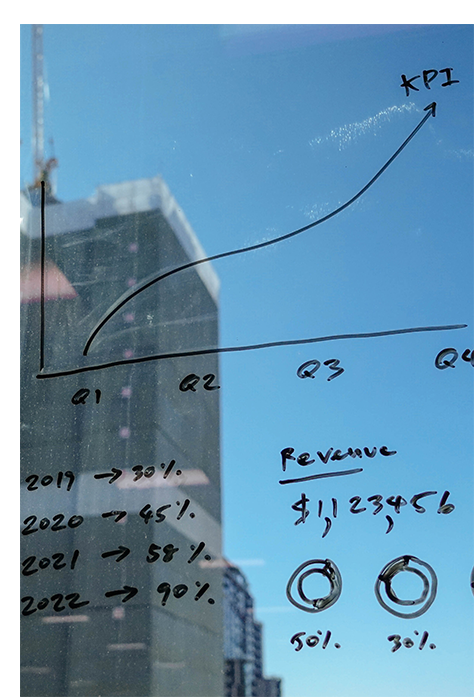As we regularly see when we help many clients structure their service, managing a customer service is a permanent challenge consisting of managing a fluctuating workload while ensuring optimal service quality.
Fortunately, there are some solutions, such as recruiting, training agents or developing self-service, etc. Before arriving at such solutions, one of the first things to do is undoubtedly to take ownership of some indicators to identify the difficulties and ultimately to plan for various improvements.
In this article, we share with you our vision of the main indicators that every customer service department should adopt in order to manage its activity.
Customer satisfaction
Measuring customer satisfaction allows you to take a step back from the quality of the service offered, in addition to giving certain details on the customer's perception, the indicator also allows you to weight all the other measures.
For example, a customer service department can achieve all its performance targets and still be poorly perceived by its customers. Why do you think this is? Responses may be too quick or too evasive. On the other hand, a customer service department may have poor performance indicators and yet have excellent results in satisfaction surveys, in which case customers praise the quality of the advice and the close relationship they have with the customer service.
The customer is therefore the best judge for understanding and developing the business and this is undoubtedly one of the first indicators to be implemented! The objective here? To have a score above 90% to be among the best customer services!
Response times
Generally speaking, the consumer does not contact customer service for good reasons and does so with a certain amount of apprehension. To reassure them and increase satisfaction, there is a simple recipe that consists of being hyper-reactive, responding much more quickly than they imagine. Another advantage of this strategy is that focusing on response times makes it possible to streamline the activity of the team which, let's not forget, is always short of bandwidth. The target to be given depends on the customers directly, so it is difficult to give you a clear idea of the objectives that customer services should set themselves here, as they vary so much from one context to another.
The rate of resolution in a response
Responding quickly is good, but giving the right answer is better. This is what we are looking to check with this metric as it shows the ability of the team to resolve requests efficiently without going into lengthy exchanges with customers. A poor score may highlight certain shortcomings to be addressed, such as :
- lack of training
- inadequate procedures
- ineffective tools
Here again, the target depends on the sector of activity. In B2B, the best scores are around 40%, while in B2C customer services they are around 90%. In any case, this indicator is a very interesting index for analysing and controlling performance.
Resolution times
No matter how well a company responds to customers, it must control its resolution times in order to maintain customer satisfaction. Regularly monitoring this indicator allows you to react to deviations, and analysing problematic tickets after the fact also allows you to identify certain shortcomings in order to plan improvements to processes, practices or certain procedures.
Here again, the idea is to have the shortest possible average and the objective varies from simple to double between a B2C and B2B context. Consumer services give themselves a few minutes or hours as an objective, whereas business-oriented services sometimes give themselves several days, given the complexity of the subjects managed.
Ticket volumes
Customer service has to deal with fluctuating activity, sometimes managing peaks in activity while ensuring a constant level of service quality. This is a real challenge for the customer service department, which does not necessarily have the necessary team to deal with a sudden increase in activity.
In this context, it is necessary to monitor ticket volumes in order to detect and take emergency measures (reassignment of tickets, mass response, etc.).
In addition, it is also wise to regularly analyse the history of tickets to identify the reasons for contact or even a certain seasonality, which makes it possible to anticipate a possible increase in demand and plan the necessary resources to deal with it.




